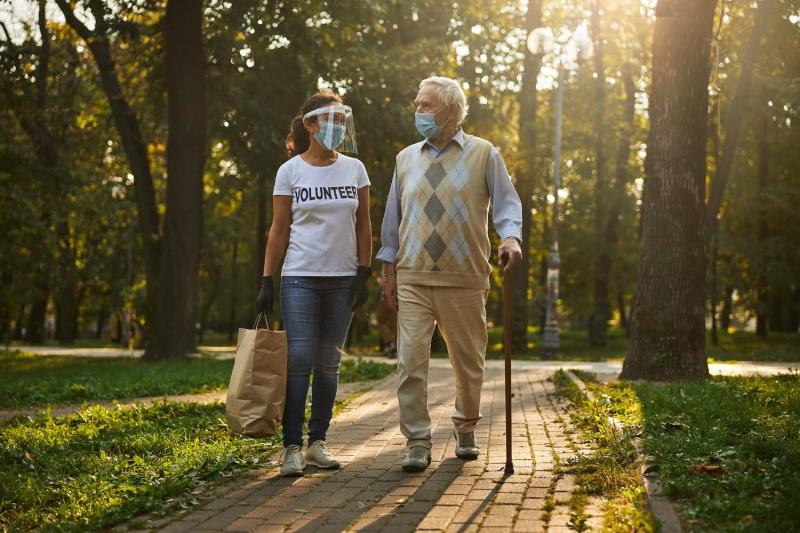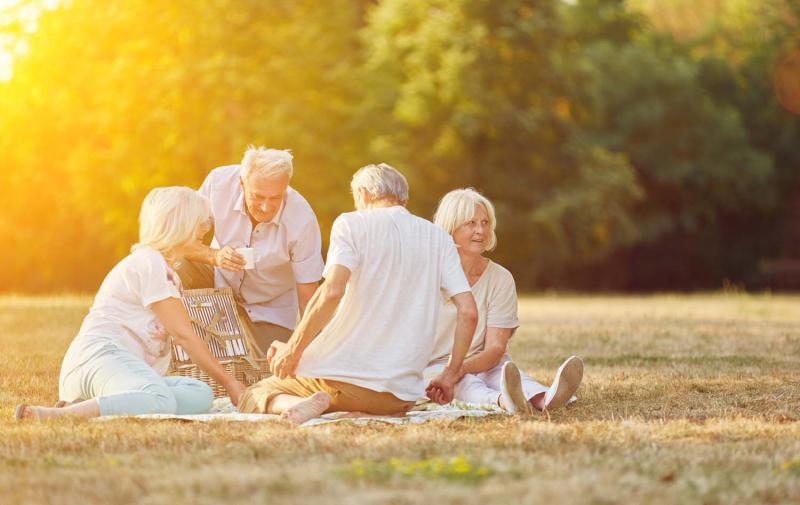Key points
- Social connectedness is an important aspect of the health of all people but especially older people in residential aged care who may be feeling isolated.
- Social connectedness can be achieved through face-to-face contact or remotely through communication technology such as phones, emails, Skype, WhatsApp, and Facebook.
Social connectedness is defined as the state and experience of belonging to a social relationship or network. [1] Social connectedness refers to the relationships with the people around a person including family, friends, the community such as the aged care facility, or even those far from the person or considered only casual acquaintances. Social connections can happen either in person or remotely.
Meaningful social connections or quality relationships are key to achieving a sense or feeling of belonging. This is sometimes challenging for older people in aged care due to different personalities, diverse backgrounds and difficulty forming new friendships due to individual factors (such as mental health problems or dementia). Engaging in common interests or hobbies usually plays an important part in establishing quality relationships. For families, friends and people supporting the older person, ensuring that they feel cared for can enhances quality connections.
This evidence theme on social connectedness in aged care is a summary of one of the key topics identified by a scoping review of social isolation research. If you need more information on this topic, try using the PubMed search below.
We found two reviews that reported interventions for social connectedness. The first found that a gender-based social club meeting with gender-specific activities benefitted older men more than older women in aged care. Older men experienced improvements in their sense of personal identity and wellbeing but not older women. Likewise, depression and anxiety, which are related to social isolation and loneliness, decreased in older men but not in older women. No change was found in cognitive ability in both groups. [2, 3]
The second review found that older people became less lonely the more they connected with family members and friends using technology and communications applications such as email and Skype or forms of social media. [4]
- Regularly connect with or contact older people, either in person or via telephone or video calls using different types of technology.
- Attempt to have meaningful conversations by talking about things that the older person likes or can relate with.
- In a residential care setting, try to encourage people who may be feeling isolated to get involved in the facility’s social activities. This may involve extra planning and effort on the part of staff if there are physical limitations that prohibit participation.
- Home care workers might develop a list of local community programs that foster social connection to suggest to lonely clients. Be sure to check if the person has the means to get to any activities.
- Ask and refer people who may want to volunteer in providing meaningful and engaging activities in specific organisations, to prevent social isolation and loneliness among the older people.
- Design and implement social activities for older people in residential aged care settings and those living in the community to promote social connectedness.
- Be aware of social activities or groups for people living in the community. Discuss this with the individual regularly.
- Contact any family and friends of an older person who appears to be socially isolated to ensure they are aware of the situation. Suggest they arrange for the person to have some form of contact using digital devices if physical visits are not feasible.
- Understand that not all people will want to seek additional social connections.
- Support older people to learn about and use varying forms of communication technology so they can contact their loved ones more often or if face-to-face contact is limited (e.g., COVID-19-related restrictions or if they live far away).
- Recruit volunteers to help provide and facilitate activities for the older people in the community and in residential aged care settings.
- Lee RM, Robbins SB. Measuring Belongingness: The Social Connectedness and the Social Assurance Scales. J Counsel Psych. 1995;42(2):232-41.
- Franck L, Molyneux N, Parkinson L. Systematic review of interventions addressing social isolation and depression in aged care clients. Qual Life Res. 2016;25(6):1395-407.
- Gleibs IH, Haslam C, Jones JM, Alexander Haslam S, McNeill J, Connolly H. No country for old men? The role of a 'Gentlemen's Club' in promoting social engagement and psychological well-being in residential care. Aging Mental Health. 2011;15(4):456-66.
- Ibarra F, Baez M, Cernuzzi L, Casati F. A Systematic Review on Technology-Supported Interventions to Improve Old-Age Social Wellbeing: Loneliness, Social Isolation, and Connectedness. J Healthc Eng. 2020;2020:2036842.
Connect to PubMed evidence
This PubMed topic search is limited to home care and residential aged care settings. You can choose to view all citations or citations to articles available free of charge.
-
Social connectedness

